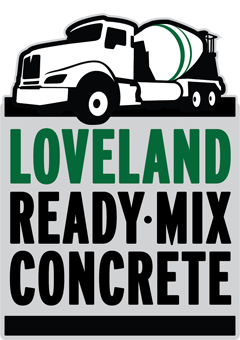Concrete must be kept soggy during restoring to accomplish ideal quality and durability. During relieving hydration happens, permitting calcium-silicate hydrate (C-S-H) to frame. Over 90% of a blend’s last quality is commonly reached inside about a month, with the leftover 10% accomplished over the years or even decades. For making construction Ready Mix Concrete Sevenoaks is used. The change of calcium hydroxide in the solid into calcium carbonate from retention of CO2 more than a very long while further reinforces the solid and makes it more impervious to harm. This carbonation response, nonetheless, brings down the pH of the concrete pore arrangement and can erode the fortification bars. Hydration and solidifying of cement during the initial three days is basic. Strangely quick drying and shrinkage because of elements, for example, dissipation from wind during position may prompt expanded pliable burdens when it has not yet increased adequate quality, bringing about more prominent shrinkage breaking.
Time of the concrete making is also important to produce it

The early quality of the solid can be expanded on the off chance that it is kept moist during the restoring cycle. Limiting pressure before restoring limits breaking. High-early-quality cement is intended to hydrate quicker, regularly by expanded utilization of concrete that builds shrinkage and breaking. The quality of solid changes (increments) for as long as three years. It relies upon cross-segment measurement of components and states of structure exploitation. The addition of easy route polymer strands can improve (diminish) shrinkage-incited stresses during restoring and increment early and extreme pressure quality. Appropriately restoring solid prompts expanded quality and lower penetrability and abstains from breaking where the surface dries out rashly. Care should likewise be taken to abstain from freezing or overheating because of the exothermic setting of concrete. Inappropriate restoring can cause scaling, decreased quality, helpless scraped spot opposition, and breaking. During the relieving time frame, concrete is undeniably kept up at controlled temperature and dampness. To guarantee full hydration during relieving, solid sections are regularly splashed with “restoring mixes” that make a water-holding film over the solid. Average movies are made of wax or related hydrophobic mixes. After the solid is adequately restored, the film is permitted to rub from the solid through ordinary use. Conventional conditions for restoring include showering or ponding the solid surface with water. The adjoining picture shows one of the numerous approaches to accomplish this, ponding—lowering setting concrete in water and enclosing by plastic to forestall drying out. Extra basic restoring strategies incorporate wet burlap and plastic sheeting covering the new concrete. For higher-quality applications, quickened restoring methods might be applied to the solid. A typical procedure includes warming the poured concrete with steam, which serves to both keep it moist and raise the temperature, so the hydration cycle continues all the more rapidly and all the more altogether.
Permeable cement performance
Pervious cement is a blend of the exceptionally evaluated coarse total, concrete, water, and practically zero fine totals. This solid is otherwise called “no-fines” or permeable cement. Blending the fixings in a painstakingly controlled cycle makes a glue that coats and bonds the total particles. The solidified cement contains interconnected air voids adding up to roughly 15 to 25 percent. Water goes through the voids in the asphalt to the dirt underneath. Air entrainment admixtures are frequently utilized in freeze–defrost atmospheres to limit the chance of ice harm. Pervious cement likewise allows water to channel through streets and parking areas, to energize springs, rather than adding to spillover and flooding. Nanoconcrete (likewise spelled “nano concrete”‘ or “nano-concrete”) is a class of materials that contains Portland concrete particles that are no more prominent than 100 μm and particles of silica no more noteworthy than 500 μm, which make up for shortcomings that would somehow or another happen in ordinary cement, accordingly significantly expanding the material’s strength. It is generally utilized in foot and roadway spans where high flexural and compressive quality is demonstrated.

